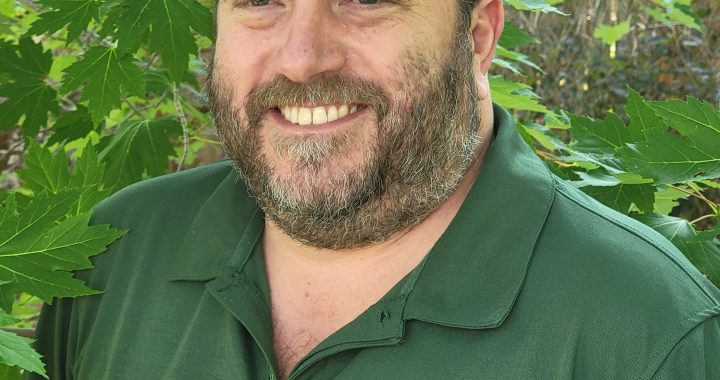In summer 1991, BA student JC Cahill found himself walking throughout the coastal estuaries of Connecticut. It was an undergraduate research project within Craig Schneider’s lab at Trinity College, Conn that set him on a hunt for some elusive green algae.
“It was beautiful,” he remembers. “Being on the water… working with plants … and realizing professors don’t really have a boss and have great job security! It was then I naively decided that was the career path for me.”
During his PhD at the University of Pennsylvania, he gained a deep interest in grassland ecosystems, and the below-ground interactions that were very poorly understood at the time.
“We didn’t have genomics tools; we didn’t know what was happening in the soil so every question was new and likely important,” he remembers.
Now a Professor of Biological Sciences at UAlberta (since 1999), JC focuses on Alberta’s grasslands, and has a long history of research at the Kinsella and Mattheis ranches.
“I’m a researcher first,” he points out. “But I also really care about teaching and mentoring students.” (Ed. note: JC was awarded the 2023 Killam Award for Excellence in Mentorship, UAlberta’s most prestigious award for mentorship.)
He’s also a botanist. He has a whole other program focused on plant behaviour, how plants make decisions with their roots, interact and find food. That falls under behavioural sciences. And, depending on the task, he’s a microbiologist as well.
“Ecologist would be a good umbrella term for my research interests,” he says. “Or simply biologist.”
It’s this diversity of interests and disciplines that makes his lab attractive to the next generation of scientists.
“I have a general policy that no grad students should work on the same question at the same time,” he insists. “Because of that, the group has lots of diverse themes, including grasslands ecology, plant behaviour, and general studies of the maintenance of biodiversity and how ecological systems function.”
Most recently, his lab group has more explicitly included cattle and grazing into their research. Cattle are critical to maintaining grasslands in Alberta, although their direct and indirect consequences are less well understood than anticipated.
“As grassland ecologists, we realize that if we want to understand plants, carbon storage, and healthy ecosystems, we have also to understand the critical role played by the large herbivores of the system.”
Although JC has worked with Gentec-associated researchers Ed Bork and Cameron Carlyle for over a decade, it was more recent engagement by Gentec CEO Graham Plastow that really helped him see the potential value and need for a more holistic research program.
“The questions about the ecological impacts of grazing are more explicit now in my research, as is a clear understanding of the need to understand the consequences of forage production and other critical aspects of livestock production,” says JC. “The science isn’t as well developed on viewing grazing systems as a whole agricultural ecosystem. Instead, the focus has typically been on studying one part at a time (plants or soils or cattle). We are moving to a more holistic view to get a better balance out of these systems long term.”
That explains the diversity of interests but what about kicking those tires?
“My research group loves experiments,” explains JC. “There’s a lot of math theory in ecology that I struggle with; I’m not convinced it necessarily reflects reality or how it’s useful. That doesn’t stop it being influential in academic ecology. We prefer to test assumptions rather than argue about their accuracy. That way, we can see what holds up and what doesn’t. So we go into the field, manipulate something (kick the tire) like defoliation, resources or water, and measure plant, animal and diversity responses. Then see what falls off so we can refine the idea.”
JC is going to spend a lot of time on the CAT-G project ($6.3 million, funded by Genome Canada, RDAR and other partners), of which he and Carolyn Fitzsimmons (AAFC/UA and a Gentec-associated researcher) are co-leads. The project takes this holistic view of the grazing ecosystem, testing the impacts of adaptive multi-paddock grazing systems on plant, soil, microbe and cattle responses, all with an eye towards soil C storage, GHG production and critical animal production metrics. As part of this work, the team aims to develop bio-indicators of carbon cycling in grasslands to help enhance carbon markets by identifying climate-smart management actions. Tools like this could record changes in soil carbon storage and lower GHG emissions on grazed land much sooner than waiting for the soil carbon to accumulate and stabilize.
“We don’t believe that environmental gains have to come at an economic cost to producers,” points out JC. “The CAT-G project starts from a place where both can be achieved, kicking those tires and tying the knowledge into Gentec and other groups that will benefit from our data. It’s important to facilitate collaborations. Just as Gentec facilitated this project. Because there won’t be just one solution that works in just one place.”

